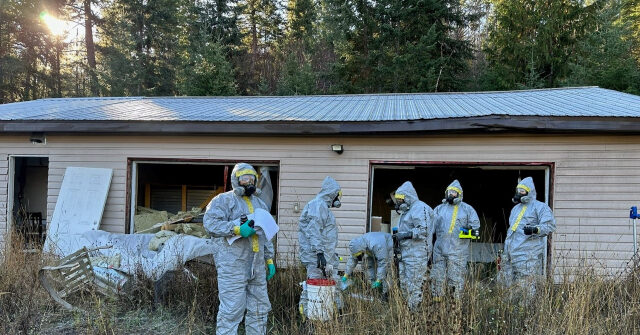The recent discovery of the largest drug lab in Canada’s history underscores the alarming rise of drug gangs in the country, showcasing their increasing sophistication and international connections. This revelation comes from the Royal Canadian Mounted Police (RCMP), which has indicated that Canadian drug gangs are developing intricate links with Mexican drug cartels and U.S. criminal organizations. This situation highlights a growing trend wherein these gangs are not only expanding their operations domestically but are also integrating into a broader, international framework of drug trafficking.
In a coordinated effort, federal investigators conducted extensive raids in several locations across British Columbia, including Vancouver and Surrey, as well as in Falkland. These operations led to the seizure of a substantial amount of drugs and precursors, including over 100 pounds of fentanyl, nearly 800 pounds of methamphetamine, along with significant amounts of cocaine and MDMA. The raids also uncovered an extensive warehouse compound recognized as Canada’s largest known drug production facility to date. This site was primarily used for producing illicit substances and was hidden in a rural area, illustrating the lengths these gangs go to in order to conceal their operations.
The scale of the seized materials was astonishing, with authorities not only confiscating large quantities of dangerous drugs but also weapons, including handguns, rifles, and even a submachine gun. The presence of explosive devices further reveals the potential for violence and intimidation associated with these operations. This extensive cache emphasizes not only the size of the lab but also the serious threats posed by organized crime in Canada, necessitating coordinated responses from law enforcement agencies across multiple jurisdictions.
As part of the investigation, Canadian authorities have identified Gaganpreet Randhawa, an individual of Indian origin, who now faces several federal drug charges related to the lab. This connection highlights the diverse backgrounds involved in these international drug trafficking networks, which often include Indo-Canadian gangs, biker gangs, and operatives from Mexican cartels. These groups are becoming deeply embedded in the drug-smuggling trade, complicating enforcement efforts and increasing the risk of violence amidst their turf wars.
Notably, the laboratory’s operations were closely aligned with techniques used in Mexico, further indicating its ties to established Mexican drug cartels. This connection reflects a troubling trend whereby domestic gangs are adopting strategies and methods from their international counterparts, leading to a more sophisticated approach to drug production and trafficking. The implications of these operations reach beyond Canada, influencing criminal activities in the U.S. and potentially affecting communities across North America.
The findings from these raids and ongoing investigations are a testament to the evolving landscape of organized crime in Canada. As drug gangs become more interconnected and operationally advanced, the response from law enforcement will require continual adaptation and collaboration across jurisdictions. Major drug operations like the one recently uncovered serve as a reminder of the significant challenges authorities face in curbing the drug crisis, which is fueled by these increasingly complex and extensive criminal networks.

